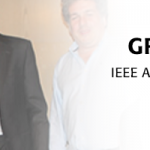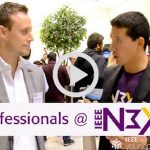Forbes: The Internet Of Things (IOT) Will Be Massive In 2018…
With the number of connected devices set to top 11 billion – and that’s not including computers and phones – in 2018, Internet of Things will clearly continue to be a hot topic.
I had the chance to speak to Bret Greenstein, VP of IBM’s Watson IoT Consumer Business, who highlighted four key trends. Interestingly three of those trends were around convergence with other distinct yet highly correlated technologies. This underlines the principle that data is the fundamental ingredient of digital transformation. The technologies predicted to make big waves in the coming year – including IoT, artificial intelligence, blockchain and edge – are all methods of collecting, analyzing and storing information.
AI will make the IoT smarter and more productive to work with
Artificial Intelligence (AI) is undoubtedly the buzzword of the moment – everyone is talking about it but a lot of people still aren’t quite sure what it is. According to Greenstein, however, 2018 is the year that understanding of its role as the brain running IoT systems will spread. As more and more devices become connected and capable of speaking to each other, AI – deep learning, natural language processing, image recognition and neural-network driven decision-making – will help them to understand each other, and us.
“AI is helping to bridge that gap – now we are seeing automakers and hotels and other companies trying to create more integrated experiences and using AI to better understand and interact with people.”
More CPU power will be spent at the edge
Pushing processing power to the “edge” – the front-facing elements of the IoT such as cameras and sensors which traditionally passively collect data to be processed in the cloud – brings a number of benefits and opportunities. Movement towards greater exploitation of this technology is a key trend for 2018 too, says Greenstein.
“Suddenly there are cameras that can not only see, they can understand the image, and microphones which can listen – that’s increasingly being pushed to the edge.”
As well as ensuring only useful data is passed back to the cloud, edge computing can benefit other considerations such as privacy. Greenstein gives an example of a system in a home care setting, where cameras or microphones could be trained to look out for signs which could indicate a resident is in danger, without impinging their privacy.
“In this scenario, you might use cameras to tell if someone is recovering well, if their gait is normal or they are walking a little slower than they should be. But also you can pick up sounds like breaking glass, things falling or water spilling. And because the processing is done at the edge, we maintain privacy because nothing is sent to the cloud unless something bad happens.”
Read more on Forbes here.






